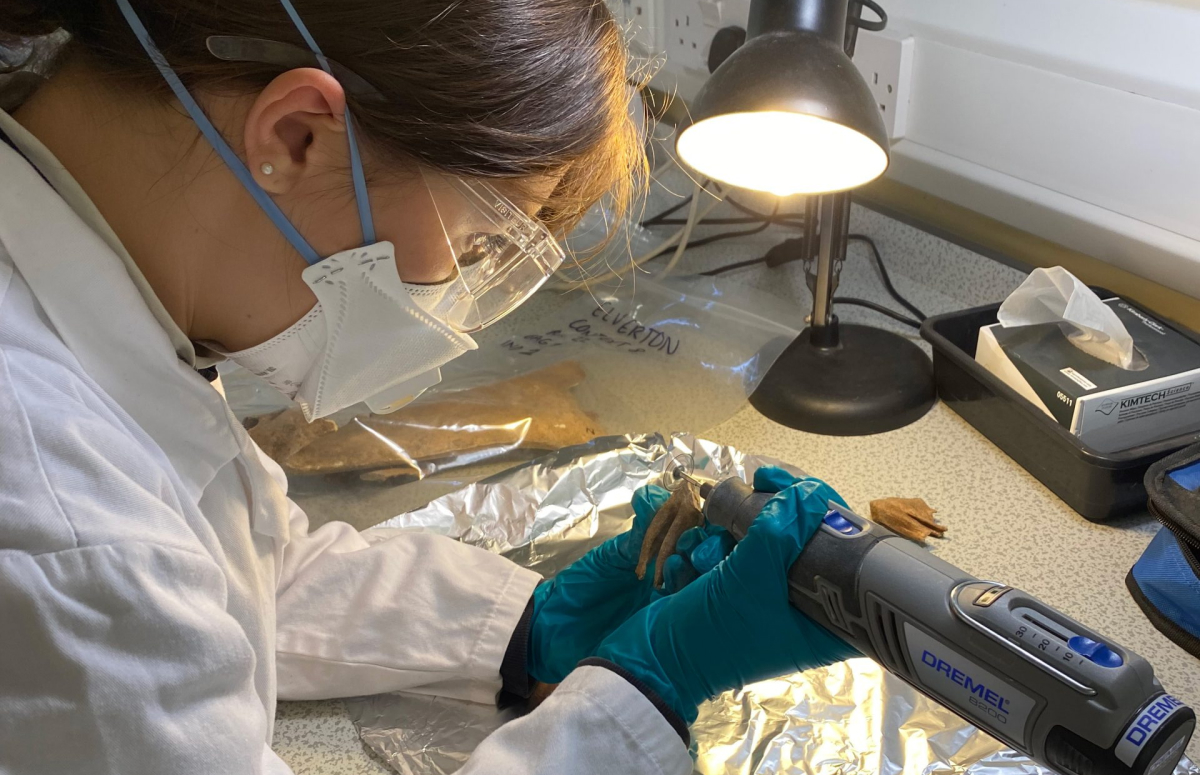Uncovering Medieval Horse Trading Secrets: An Archaeological Study

A groundbreaking study of an animal cemetery in London offers remarkable insight into the immense global nature of horse trading undertaken by England's medieval elites. The research, which utilized sophisticated archaeological techniques, traced the origin of exceptional horses, demonstrating the prominent role they played as status symbols and in jousting, as well as showcasing the lengths that the elite went in obtaining such distinguished animals. Credit: University of Exeter
An in-depth archaeological study of a near unique animal graveyard found in London almost three decades earlier has exposed the widespread degree of horse trading by late medieval and Tudor England's elites.
The pioneering archaeological science methods applied, including observing the chemical composition, enabled researchers to trace the probable origins of a number of physically superior horses and the paths they took to reach British shores during their early years.
These animals, much like today's supercars, were procured from various European locations specifically for their size and power. They were then imported to serve in jousting tournaments and as symbols of status during the time between the 14th and 16th centuries. Some were counted among the tallest of England's late medieval era, reaching as much as 1.6 meters (15.3 hands) in height. Despite being considered small by current standards, these horses would have been very impressive during their time.
The horse skeletons were discovered at a site located under the present-day Elverton Street in the City of Westminster. The excavation was done ahead of construction work conducted in the 1990s. During medieval times, the cemetery was positioned outside London's walled city but in close proximity to the royal palace complex at Westminster.
The study was helmed by the University of Exeter and financially supported by the Arts and Humanities Research Council. The findings have been published in the latest edition of Science Advances.
Dr Alex Pryor, leader of the research and Senior Lecturer in Archaeology at the University of Exeter, informed us that the distinct chemical signatures in the horse teeth are significantly unique and divergent from what would be expected of UK-raised horses. He added that these findings offer unparalleled evidence about the diverse horse movement and commercial practices during the Middle Ages. It's highly plausible that the horses had partaken in jousting tournaments held in Westminster, not too far from their burial site.
In an initial experiment of its kind conducted on medieval horse remains, the research team extracted 22 molar teeth from 15 separate animals and took portions of the enamel out for isotope analysis. By mapping out the isotope ratios of the elements strontium, oxygen and carbon in the teeth and cross-referencing the results with established ranges in different geographical locations, the team was able to pinpoint and effectively eliminate potential origin sites, including renowned horse-breeding centers such as Spain and southern Italy.
Physical examination of the teeth indicated wear consistent with heavy usage of a curb bit, a device often used with superior animals, particularly those prepared for war and tournaments after the 14th century. Upon analyzing the skeletons, the researchers found that many of the horses were larger than the average size, with several instances of merged lower thoracic and lumbar vertebrae indicative of a life filled with riding and strenuous work.
Professor Oliver Creighton, a medieval specialist at the University of Exeter and part of the research team, likened the top-notch medieval horses to contemporary supercars – extremely pricey and fine-tuned machines that amplified their owner's status. The study has unearthed evidence supporting the use of these horses in jousting – a sport typically reserved for kings and their displays of combat skills and horsemanship.
The interesting findings deliver a concrete archaeological signature of this trade, highlighting its global scale. It appears that London's medieval elites were specifically targeting the highest quality horses from across Europe.




